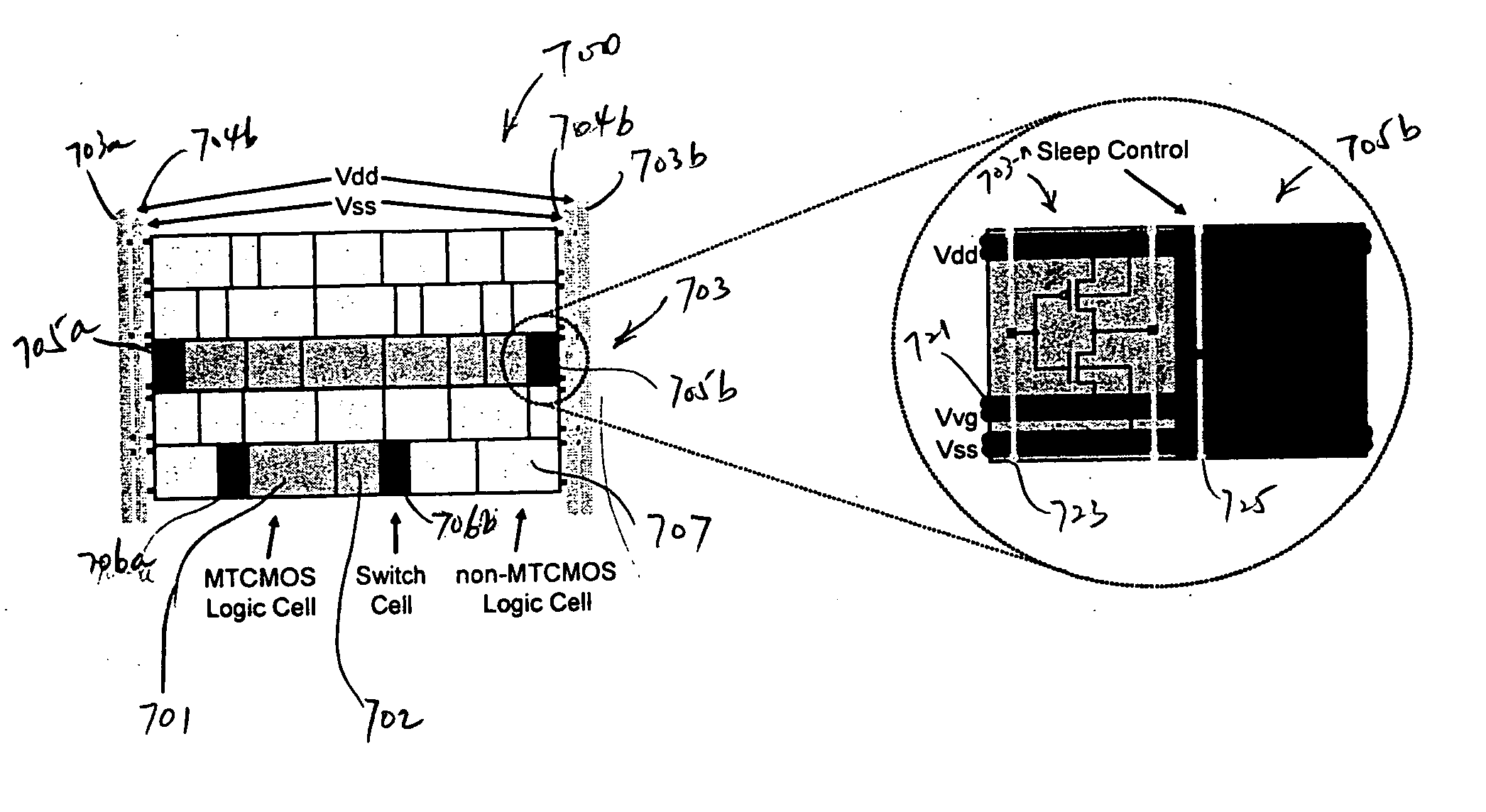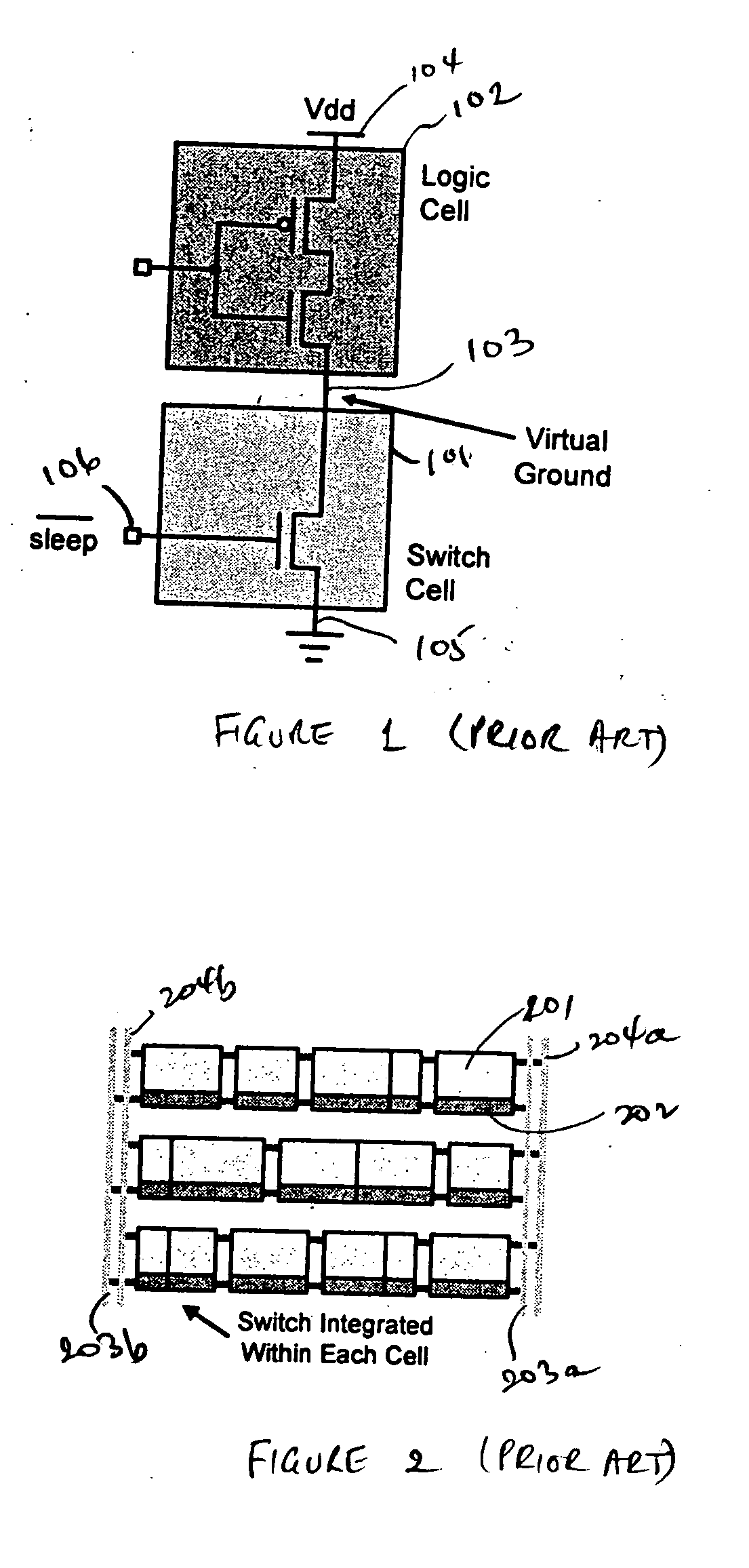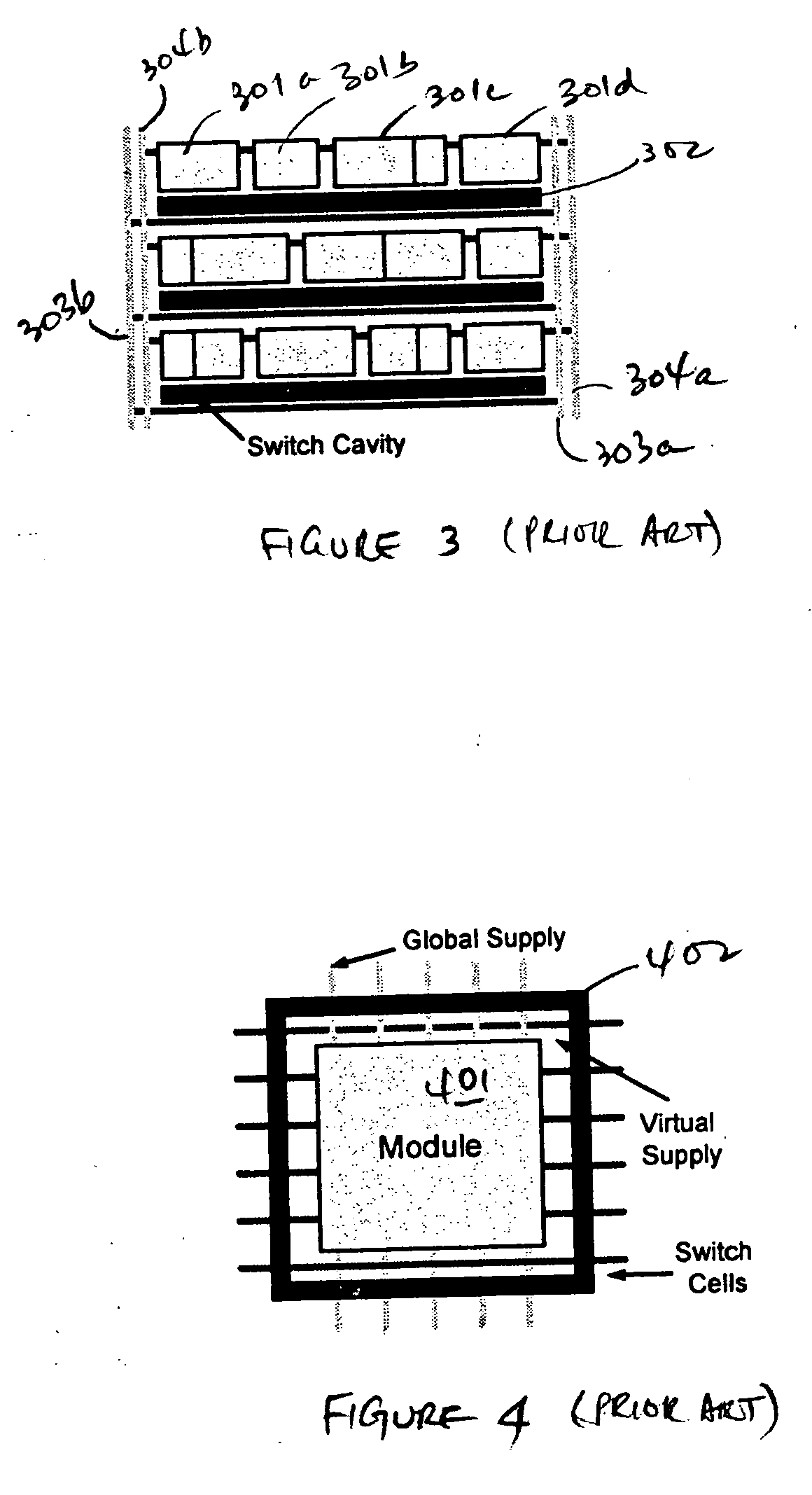Design method and architecture for power gate switch placement
a technology of design method and architecture, applied in logic circuit coupling/interface arrangement, pulse technique, instruments, etc., to achieve the effect of avoiding performance penalties and not increasing the overall real estate requirement of the integrated circui
- Summary
- Abstract
- Description
- Claims
- Application Information
AI Technical Summary
Benefits of technology
Problems solved by technology
Method used
Image
Examples
Embodiment Construction
[0030] The present invention provides a design method in which power gates or switch cells are placed at unoccupied locations of logic cell rows. The inventors observe that, using conventional standard cell design and placement techniques, the placement density or utilization that can be achieved is typically between 70-80% (i.e., unoccupied space constitutes between 20 to 30% of the available space in each row of logic cells). The present invention places power gate cells in the unoccupied space. The available unoccupied space typically provides sufficient space to accommodate all the power gate cells required in a row of logic cells. Thus, inclusion of power gates in the logic circuit design does not increase the silicon real estate requirement.
[0031] In this detailed description, the present invention is illustrated by embodiments in which the power gate cells connect the logic cells to a true ground voltage reference. However, the present invention is equally applicable to powe...
PUM
 Login to View More
Login to View More Abstract
Description
Claims
Application Information
 Login to View More
Login to View More - R&D
- Intellectual Property
- Life Sciences
- Materials
- Tech Scout
- Unparalleled Data Quality
- Higher Quality Content
- 60% Fewer Hallucinations
Browse by: Latest US Patents, China's latest patents, Technical Efficacy Thesaurus, Application Domain, Technology Topic, Popular Technical Reports.
© 2025 PatSnap. All rights reserved.Legal|Privacy policy|Modern Slavery Act Transparency Statement|Sitemap|About US| Contact US: help@patsnap.com



